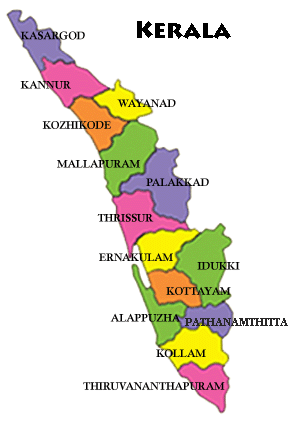Kerela – History, Geography, Economy, Tourism
About Kerela
In old-time, the number of inhabitants in Kerala was blended with diverse gatherings of Dravidian. The old Dravidian kingdoms of South India (Chera, Chola, and Pandya) and also their kin were held together by cozy obligations of blood, dialect, and writing and that was the power, which advanced a kind of social homogeneity in South India. The Aryan outsiders who settled in Kerala had themselves to experience radical changes in their lifestyles, propensities, traditions, and behavior.
This procedure of change prepared for an alluring combination of the two floods of society; the Aryan and the Dravidian. Aryan frameworks of the drug, crystal gazing, and craftsmanship and building design additionally were presented. The Vedas, Upanishads, and Puranas turned into the sacred writing their lifestyles, propensities, traditions, and behavior. This procedure of change prepared for an attractive combination of the two surges of society; this union developed Kerala society as it is today.
Kerala has a society with certain unmistakable qualities. Hinduism, Buddhism, Islam, and Christianity have contributed to their noteworthy offer in advancing the social abundance of Kerala. The States Reorganization Act of November 1, 1956, hoisted Kerala to statehood.
The state is wedged between the Lakshadweep Sea and the Western Ghats. Lying between north scopes 8°18′ and 12°48′ and east longitudes 74°52′ and 77°22′, Kerala encounters the damp central tropic atmosphere. The state has a bank of 590 km (370 mi) and the width of the state fluctuates somewhere around 11 and 121 km (22–75 miles).
Geographically, Kerala can be separated into three climatically particular districts: the eastern good countries; tough and cool hilly landscape, the central mid-terrains; moving slopes, and the western swamps; seaside plains. The state is situated at the great southern tip of the Indian subcontinent and lies close to the central point of the Indian tectonic plate; henceforth, it is liable to similarly low seismic and volcanic movement.
Kerala has a wet and sea tropical atmosphere affected by the regular substantial downpours of the southwest summer rainstorm and upper east winter storm.
After autonomy, the state was overseen as a law-based communist welfare economy. From the 1990s, liberalization of the blended economy permitted difficult License Rajrestrictions against private enterprise and outside direct speculation to be helped, prompting financial extension and increment in the job. In the financial years, 2007–2008, the ostensible gross state local item (GSDP) was ₹1624 billion (US$25 billion).
GSDP development; 9.2% in 2004–2005 and 7.4% in 2003–2004 had been high contrasted with normal of 2.3% yearly in the 1980s and somewhere around 5.1% and 5.99% in the 1990s. The state recorded 8.93% development in endeavors from 1998 to 2005, higher than the country’s rate of 4.80%.
Human Development Index rating is the most astounding in India at 0.790. The “Kerala marvel” or “Kerala model of improvement” of high human advancement and very little high monetary improvement came about because of a more grounded service sector.


